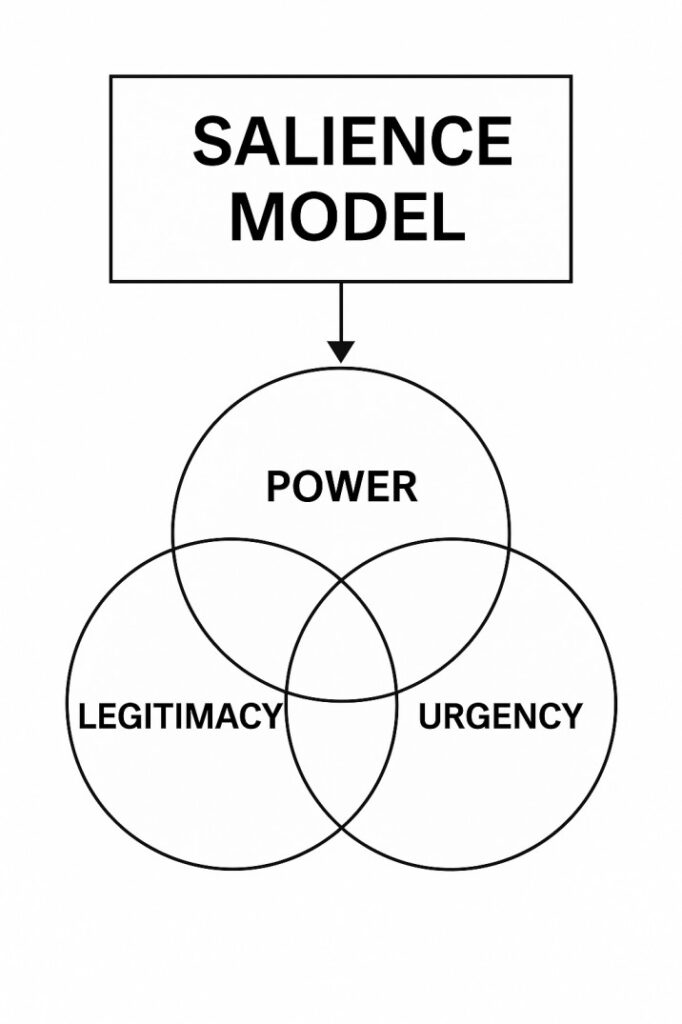
The Salience Model is a stakeholder classification framework used in project management to prioritize stakeholders based on three key attributes:
Three Attributes of the Salience Model
- Power – The stakeholder’s ability to influence the project or its outcomes.
- Legitimacy – The stakeholder’s involvement is appropriate, rightful, or desirable within the context.
- Urgency – The degree to which the stakeholder’s needs require immediate attention.
Purpose
To identify and prioritize stakeholders so that the project manager can effectively manage their expectations, communications, and involvement.
Stakeholder Types in the Salience Model
| Stakeholder Type | Attributes Possessed | Description |
|---|---|---|
| Dormant | Power | Passive, can become active |
| Discretionary | Legitimacy | No power or urgency (e.g., charity) |
| Demanding | Urgency | Irritating but no power or legitimacy |
| Dominant | Power + Legitimacy | Influence project decisions |
| Dangerous | Power + Urgency | May become coercive or threatening |
| Dependent | Legitimacy + Urgency | Needs support from other stakeholders to influence |
| Definitive | Power + Legitimacy + Urgency | Must be prioritized immediately |
| Non-stakeholder | None | No relevance to the project |
Why Use the Salience Model?
- Helps determine who matters most
- Supports effective communication planning
- Guides resource allocation for stakeholder engagement
- Enables early identification of potential threats or allies
